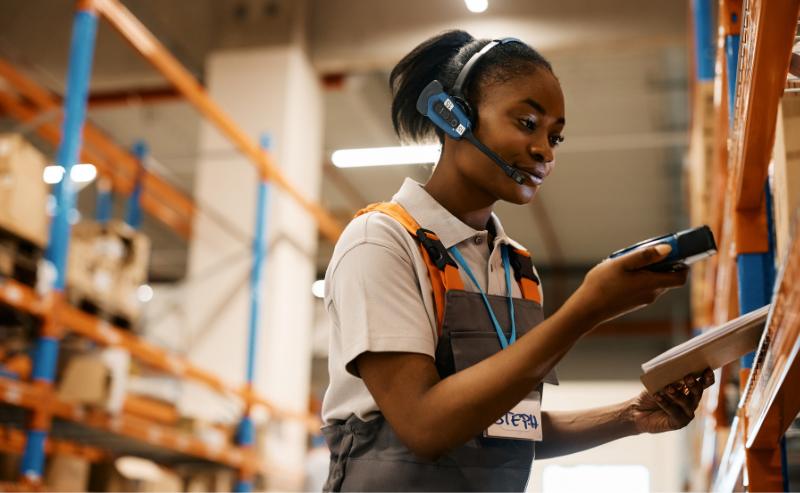
According to the Annual Third-Party Logistics Study issued by Penn State, CsCMP, Penske and NTT Data, “Expectations for 3PLs have grown. It’s no longer sufficient to simply move freight from Point A to Point B. Shippers now expect continuous improvement, value creation, and the strategic use of technology and expertise to drive efficiency and insight.”
Fact is, the overwhelming majority of shippers (90%) consider technological capabilities critical when selecting a 3PL. However, only 57% say they are satisfied with 3PL providers’ technology capabilities, indicating that an “IT gap” remains.
Looking ahead to the coming year, we spoke with Chipper Farley, President of 3PL Solutions at Made4net. With a 30-year career spanning client-side warehouse operations and vendor-side technology leadership, Farley shared his insights on the trends, challenges, and strategic use of technology that help 3PLs stay competitive in an ever-evolving industry.
Q: What is the biggest challenge facing 3PLs as we enter 2026?
A: The market is changing faster than ever. Ongoing volatility—whether it’s unpredictable demand, inflation, or new tariffs and regulations—makes flexibility and visibility absolutely critical. These disruptions are forcing 3PLs to rethink old playbooks, upgrade existing systems, and adopt new technologies.
At the same time, supply chains are becoming more complex and dynamic. Shippers and their logistics partners are looking for strategic partnerships that deliver long-term value, foster innovation, and improve resilience. Several factors are driving this shift.
For shippers, key motivators include managing supply chain disruptions, navigating complexity, optimizing costs, and pursuing digital transformation. On the 3PL side, the pressure comes from the need for end-to-end visibility, offering customizable and value-added services, and optimizing costs.
Today’s 3PLs need to be agile, tech-enabled, and proactive to stay competitive in a landscape that’s more dynamic than ever.
Q: What trends set progressive 3PLs apart?
A: There are a few trends that really set the most forward-thinking 3PLs apart.
First is data and analytics. The best 3PLs pull together real-time information across orders, shipments, inventory—even returns—so they can see what’s happening at any moment. That visibility lets them handle exceptions before they become problems, optimize inventory, plan routes more efficiently, and make smarter, faster decisions.
Second, automation and robotics. A modern WMS is still essential, but top 3PLs layer on technologies like autonomous mobile robots, IoT devices, and AI-driven automation to streamline picking, packing, and inventory management. This helps them deal with labor shortages, move faster, and scale operations smoothly—even during peak periods.
Third is talent and workforce development. Technology can do a lot, but people remain at the heart of logistics. The most successful 3PLs focus on attracting adaptable, skilled professionals, offering ongoing training, and creating a hybrid environment where traditional logistics know-how and new technologies work hand in hand.
Finally, value-added services and client experience. Leading 3PLs go beyond basic warehousing and transportation by offering kitting, custom packaging, labeling, quality inspections, and managed returns. Technology plays a big role here too—online portals give clients real-time visibility into inventory and orders, while mobile apps and automated notifications keep everyone informed. These tools make the experience smoother for clients and position the 3PL as a true partner, not just a vendor.
Q: You mentioned data, automation, and tech—what are the biggest technology trends shaping 3PLs today?
A: There are a few that really stand out. AI and machine learning are helping 3PLs make sense of all the data coming in from orders, shipments, inventory, and returns. It’s not just about collecting data anymore—it’s about turning it into actionable insights, so decisions happen faster and operations run smoother.
Network optimization is another big one. 3PLs are using technology to plan routes, allocate resources, and manage inventory across multiple facilities more efficiently. That means they can respond quickly when demand shifts or disruptions happen.
And then there’s the broader concept of the digital supply chain. This is where goods, information, and finances are all connected digitally. When done right, it improves visibility, speeds up decision-making, and creates a seamless experience for both the 3PL and their clients.
All of these technologies are powerful, but here’s the thing—they only work if your WMS is strong. Think of it as the foundation: if the WMS isn’t solid, adding AI, automation, or digital tools just creates more complexity without delivering results.
Q: Does this mean the role of the WMS is changing?
A: Definitely. For a long time, 3PLs treated the WMS like just another cost of doing business—something you paid for to keep the lights on, like the electric bill. That’s changed. Today, technology isn’t just a line item; it’s a strategic investment and a key way 3PLs compete and deliver real value.
A good WMS isn’t just another tool in the stack—it’s the brain and backbone of your operations. It’s what makes everything else work. AI, automation, advanced analytics, marketplace integrations—they all depend on a solid WMS. Think of it like building a house: the WMS is the foundation, and everything else—the walls, the roof, the furnishings—makes it functional.
The 3PLs that really win are the ones that treat their WMS as a platform—something they can build on. When it’s connected to the rest of your tech stack, data flows smoothly, decisions happen faster, and operations scale efficiently.
Q: How can 3PLs modernize without disrupting daily operations?
A: The key is scalability. Modern WMS platforms must be engineered to integrate AI and automation when the operation is ready—without requiring a costly overhaul. Systems built with open architecture, robust APIs, and flexible deployment models allow 3PLs to evolve on their own timeline, keeping operations running smoothly while layering on new capabilities.
Q: Where are 3PLs seeing the biggest wins from AI and automation?
A: Measurable gains in speed, accuracy, and efficiency rise to the top—from cycle counting and inventory management to forecasting and labor optimization. As the U.S. 3PL market continues to expand, projected to grow by more than $130 billion between 2025 and 2029, these technologies aren’t just optional—they’re becoming core drivers of competitiveness and profitability. AI and automation are reducing errors, boosting productivity, and supporting always-on, responsive operations through AI-driven picking systems, real-time tracking, predictive analytics, and robotics.
The warehouses that thrive however won’t be the ones that chase full automation. They’ll be the ones that strategically deploy technology to enhance human capabilities, creating operations that are both efficient and adaptive. The goal isn’t to replace people—it’s to liberate them from mundane, repetitive tasks so they can focus on what humans do best: building client relationships, solving complex problems, making contextual decisions, driving innovation, and managing exceptions that fall outside standard processes.
Leading 3PLs are implementing AI thoughtfully, keeping humans in the loop. For example, Taylor Logistics uses drones for cycle counting—but the drone doesn’t make inventory adjustments. It identifies locations that need checking, and humans verify and make the final decisions. This collaborative approach blends human problem-solving with machine precision and speed, allowing providers to scale faster, adapt to volume spikes, and maintain the quality control and client focus that sets them apart.
Q: What differentiates 3PLs that will win in 2026?
A: Having a WMS is no longer enough. The true winners will layer on capabilities—embedded analytics, modular automation, decision intelligence, and integration across ecosystems—to turn the WMS into a strategic platform, not just a warehouse tool. The technology stack may be expanding, but success still starts at the core.
Your Next Step: Finding the Right WMS
Behind every great 3PL is a WMS doing the heavy lifting. The best 3PLs manage multiple clients, diverse industries, and varying service levels seamlessly—and that capability is built on the right foundation. As the 3PL market expands past $1.8 trillion globally by 2026, operational excellence will depend on how effectively you leverage your WMS as a control center, layering value-added services, automation, integrations, and real-time data on top of a robust platform.
The 3PLs positioned to thrive are those that track emerging trends, intelligently blend skilled labor with strategic technology, and treat their WMS as more than software—as the platform that enables everything else. Whether you’re exploring options for a new solution or ready to begin selection, we’ve created a complete roadmap guiding you through every stage of choosing your ideal WMS partner.


